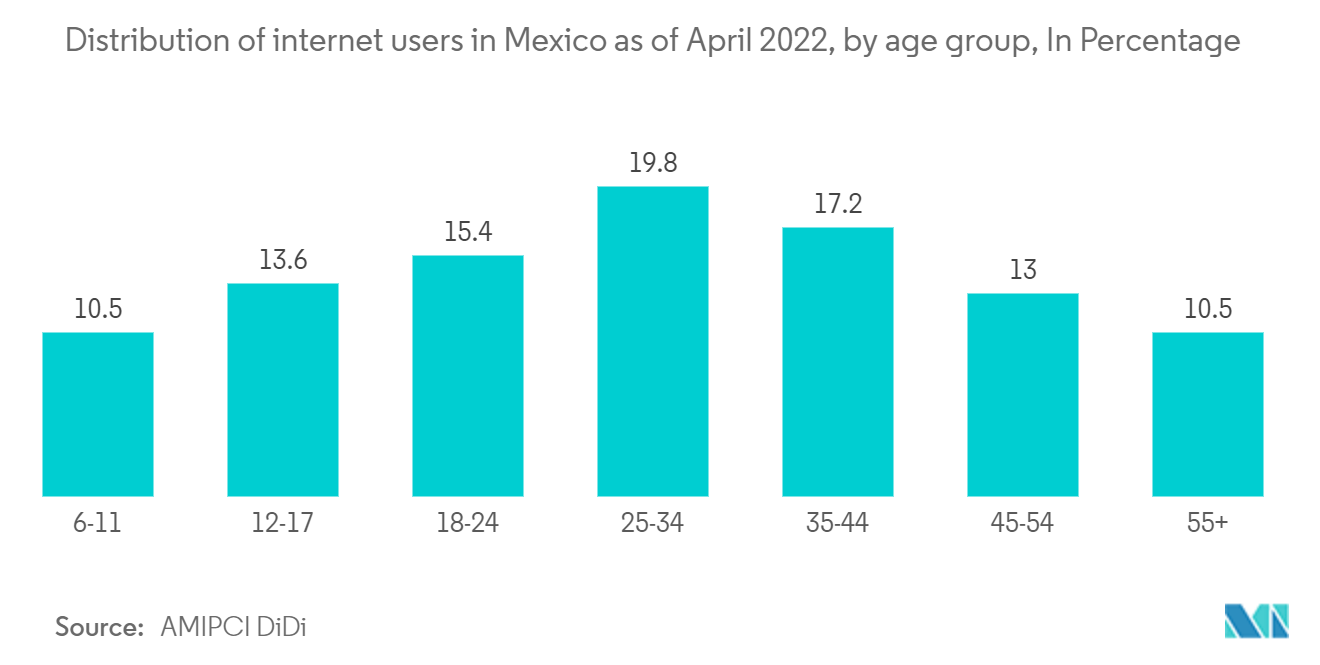Market Trends of Mexico ICT Industry
Significant Growth in Telecommunications Sector
- Mexico is the second-largest market after Brazil, accounting for approximately USD 81 billion in the region's telecommunications industry. Mobile services are often far more widely used than fixed-line services. For instance, in Mexico, there are 93 mobile cellular subscriptions for every 100 residents as opposed to only 18 for every 100 residents with landline phone service. Despite this, both fixed-line and mobile companies claim reasonable subscriber growth rates.
- Nevertheless, residents in the nation don't frequently rely on fixed-line services alone; more than 50% of Mexican households exclusively have mobile service plans, while just 36% have fixed-line and mobile service contracts. The Mexican telecommunications sector has regularly outperformed GDP growth over the past ten years, primarily due to the rise of mobile, broadband, and broadcasting. The widespread use of cell phones dramatically facilitates mobile internet usage. More than 132 million cell phones were used nationwide in the previous year.
- Telcel is the most valuable Mexican telecom brand and a revenue engine. The revenues of Telcel, the second-placed firm, as a fixed-line phone service and broadband internet provider, are approximately four times larger than AT&T's. Joining Telcel and AT&T is Telefonica, which conducts business as Movistar in Mexico. With a market share of more than approximately 60%, Telcel continues to be the industry leader in the mobile space.
- Early last year, there were almost 450 million unique mobile users in Latin America. By 2025, there will be 485 million, or 73% of the population, predicts the GSMA's assessment of the region's mobile economy for 2021. Significant participation from Mexico is anticipated in this expansion. From 65% in 2020 to 70% in 2025, mobile subscriber penetration is expected to increase across Mexico. From 57% in 2020 to 66% in 2025, the country's mobile internet use is expected to soar. After Brazil, Mexico is predicted to have Latin America's second-best smartphone market.
- AT&T was the first telecommunications provider to declare the launch of 5G in Mexico in 2021. AT&T stated in July last year that they anticipated having 5G connectivity in 25 Mexican cities by year's end. Mexico City, Guadalajara, and Monterrey are said to have the most excellent 5G connectivity thus far. However, beginning in the summer of the last year, AT&T customers in Morelia, Saltillo, Obregón, Hermosillo, and Culicán may count on 5G connectivity.

Rising Digital Adoption in Mexico
- The trend in the adoption of digitalization technology is rising in Mexico. The country's state governments are only starting to use modern technology. Emerging technologies like cloud computing, big data, the Internet of Things (IoT), and artificial intelligence are starting to be used by governments. Mexico has tried adjusting to the quick changes in its society. The nation is working to create an environment that would encourage tech-driven innovation.
- COVID-19 has greatly influenced Mexico's aim to become a completely sustainable nation by 2020. The nation's businesses of all sizes prepared better than the rest of the globe to begin the nation's digital transformation project. The globe used 39% of the internet's resources at the beginning of this year, while Mexico had 52%.
- One of the pillars of contemporary technology has been AI. It's associated with the word "smart" when discussing technology like smartphones, smart automobiles, and smart toilets. Several firms in Mexico that produce electrical devices are presently applying AI algorithms to develop cutting-edge smart items that are easy to use. Additionally, software development businesses are integrating AI into their computers to assist decrease failure rates, speed up development, and offer precise cost and timeframe predictions for the software and strategic management.
- It is anticipated that Mexican IT firms would use AI and IoT infrastructure last year without possessing the rights to any proprietary cognitive programming or servers. It would assist in lowering coding expenses and accelerating the software development procedures. Adopt this revolutionary concept of no-code interfaces into your business. A lack of programming expertise or a lack of understanding of data structures will no longer be a barrier.
- Escalated internet connection has supported the digital sector's fast growth in Mexico. According to the Mexican Internet Association, 89.5 million individuals, or 75.7% of the country's population over the age of six, were online by the early last year. Only 48% of individuals in rural regions have access to the internet, and internet users are disproportionately concentrated in metropolitan areas.
- Nearly a quarter of Mexican internet users in April last year were in the 25-34 age bracket. Mexicans between the ages of six and eleven made up around 10.5% of online users, which is the same percentage as people over 55. In the meanwhile, the majority of internet users in the nation were women.



